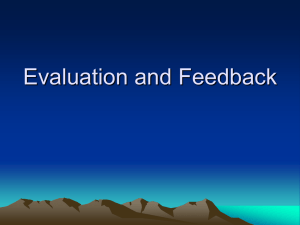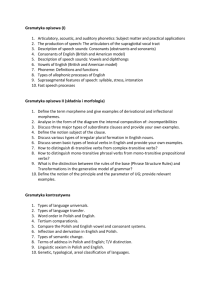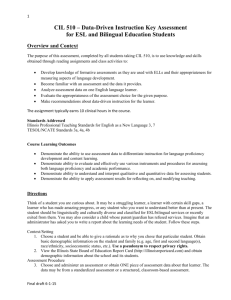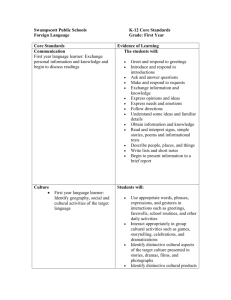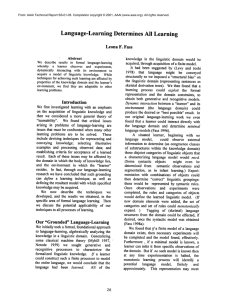Learning Technology Resource Evaluation Rubric
advertisement
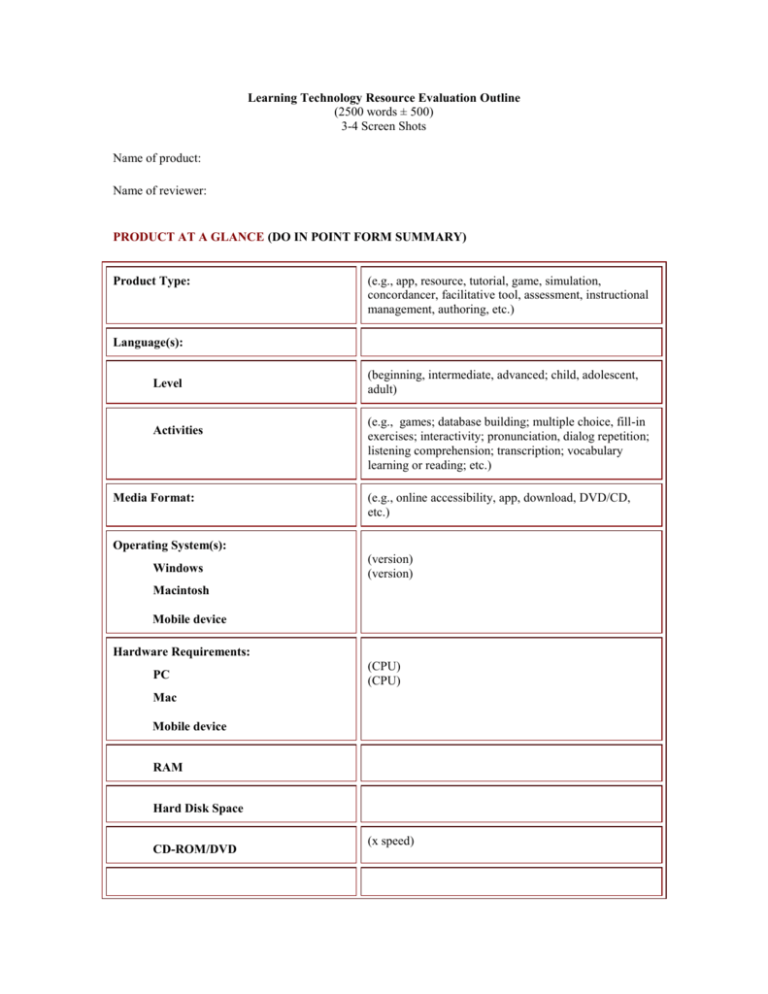
Learning Technology Resource Evaluation Outline (2500 words ± 500) 3-4 Screen Shots Name of product: Name of reviewer: PRODUCT AT A GLANCE (DO IN POINT FORM SUMMARY) Product Type: (e.g., app, resource, tutorial, game, simulation, concordancer, facilitative tool, assessment, instructional management, authoring, etc.) Language(s): Level Activities Media Format: (beginning, intermediate, advanced; child, adolescent, adult) (e.g., games; database building; multiple choice, fill-in exercises; interactivity; pronunciation, dialog repetition; listening comprehension; transcription; vocabulary learning or reading; etc.) (e.g., online accessibility, app, download, DVD/CD, etc.) Operating System(s): Windows (version) (version) Macintosh Mobile device Hardware Requirements: PC (CPU) (CPU) Mac Mobile device RAM Hard Disk Space CD-ROM/DVD (x speed) Sound Video (e.g., sound card, microphone) (e.g., x colors; screen resolution) Supplementary Software or Hardware (e.g., QuickTime, ver. x; WWW browser, ver. x, Plugins; gesture-based or touch screen devices) Printed Documentation (e.g., User's Guide, Teacher's Guide) Online Printed Price Single user Multiple copies Site license Distribution Rights (DO REMAINDER OF REVIEW DISCURSIVELY) 1. GENERAL DESCRIPTION (25% of review) Summary of features Background information Advertising claims, previous reviews Documentation: On-line help, printed manuals 2. EVALUATION (60% of review) Technological Features Simplicity of installation or access (e.g., adequacy of instructions, trouble free, easy to uninstall) Speed of program, tool, or resource operation (e.g., where are the delays: at startup, loading videos, web page loading?) Reliability of operation (crashes & stalls) Platform compatibility (PC/Mac; OS/Browser versions; mobile devices) Screen management (esthetics, navigational transparency) User interface (ease of use, operational consistency, online help) Exploitation of computer potential (effective use of technology such as speech recognition, speech synthesis, intelligent response handling, student record keeping, adaptability based on user profiles, www connectivity, sound, graphics, video, etc). Activities (Procedure) This is essentially a matter of determining what students do when they use a program and how well these activities are designed. Judgments here must always be made relative to activity type. You may be personally opposed, for example, to the use of structuralist grammar exercises, but, in evaluating these, you cannot criticize them for not being collaborative in nature. You have to judge such exercises relative to how well done they are as a structuralist activity. (The appropriateness of activities is a separate issue, dealt with under Teacher Fit). Broadly speaking, activities can be classified into three major types: Instructional (e.g., tutorials, videos, drills, text reconstruction, speaking and speech recognition) Collaborative (e.g., games, simulations, discussion forums, peer group writing) Facilitative (e.g., dictionary, database, verb conjugator, spell/grammar checker, authoring system) Obvious activity features to consider are Linguistic focus (e.g., discourse, syntax, lexis, morphology, spelling, pronunciation) Language skills (e.g., reading, listening, writing, speaking) Sociolinguistic focus (e.g., information gathering/authentic tasks) Supplementary/Complementary/Central relationship to the to curriculum Teacher Fit (Approach) An assessment of teacher fit primarily involves looking at the theoretical underpinnings of student activities and judging how well they conform to accepted theories of cognitive development, second language acquisition, and classroom methodology. Referring to relevant theories or findings from the literature is adds depth and critical thinking to this section. Linguistic accuracy (e.g., grammaticality, authenticity, typos, etc.) and the appropriateness of sociocultural representations (e.g., stereotypes, gender bias) also contribute to how well a program, tool, or resource meets teacher expectations. Teacher fit is the most critical parameter of the evaluation, for it determines the pedagogical soundness and appropriateness of the program. No matter how technically brilliant a program may be or how rich the activities it provides, if its methodology is dubious, if it fails to adhere to its avowed instructional approach, or if it pays insufficient attention to linguistic accuracy or sociocultural authenticity, then it will be of limited usefulness. Not surprisingly, the assessment of teacher fit is the most difficult parameter to determine. Partly, this is because developers do not always explicitly state the theoretical/methodological assumptions underlying their program/tool/resource, thereby obliging a reviewer to extract them by implication. On the other side of the coin, producers are very much aware of what methodological approaches are in favor (e.g., communicative, learner centered, constructivist, experiential) and label their products accordingly, whatever the truth of the matter may be. Learner Fit (Design) In considering learner fit, you are in essence defining the intended user of the program, tool, or resource. In doing so, you are also determining the extent to which the program is appropriate for, or can be adapted to, the needs of particular kinds of students. Properties affecting learner fit include Linguistic level (grammar, vocabulary, register) Response handling (error correction, feedback) Adaptation to individual learner differences (age, interests) Learning styles (recognition, recall, comprehension, experiential learning) Learning strategies Field-dependent/-independent learning Deductive/Inductive reasoning Visual-graphic/Visual-textual learning Individual/Group work Learner control (sequencing, content, operating parameters) Design flexibility/modifiability by the instructor References (please format in APA style) 3. SUMMARY (4-5 sentences + rating chart) Scaled rating (1 low-5 high) Implementation Possibilities: Pedagogical Features (relative to evaluation parameters): Sociolinguistic Accuracy (typos, grammatical errors, stereotypes): Use of Computer Capabilities (multimedia bells & whistles): Ease of Use (student/teacher): Overall Evaluation: Value for Money: 4. PRODUCER DETAILS Developer/distributor Name Address Phone Fax Email URL 5. REVIEWER INFORMATION Biodata (75 words) Contact information (address, phone, fax, email, URL, Twitter, LinkedIn, etc.)






